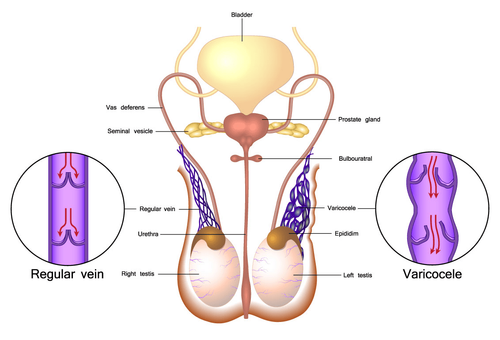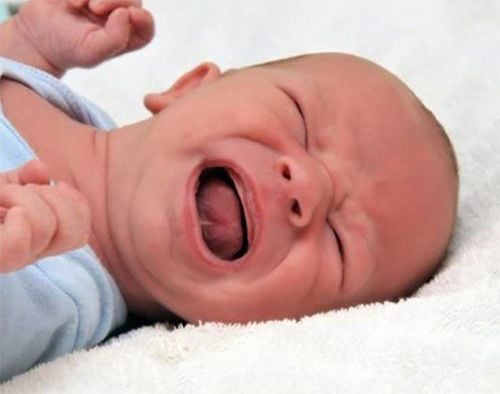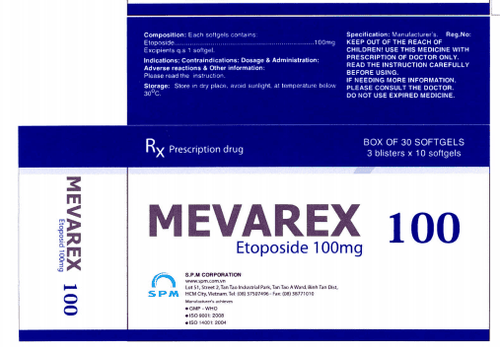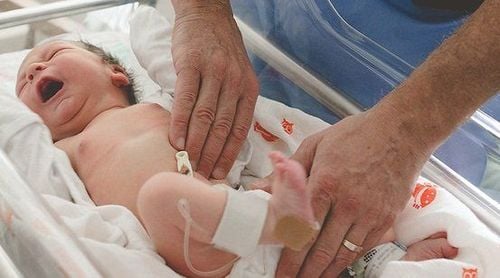This is an automatically translated article.
According to statistics, testicular cancer ranks 24th among the types of cancer in men with the highest incidence between the ages of 25-35. Testicular cancer causes reduced health, reduced quality of life, infertility and can lead to death. Screening and early diagnosis of testicular cancer help increase the effectiveness of treatment.1. What is testicular cancer?
The testicles are part of the male gonads located in the scrotum. It plays a role in the production and storage of sperm, and also participates in the endocrine system with the role of producing the hormone testosterone.Testicular cancer is a malignant tumor growth that comes from one of the testicles. This is a rare disease, accounting for about 1% of cancers in men, accounting for 5% of cancers of the genitourinary tract. Fortunately, testicular cancer is a highly curable cancer, the survival rate for all stages is 92%, only the metastatic stage is 70% curable.
The cure rate depends on the stage and extent of metastasis of the cancer:
Stage I: Cancer is confined to the testicle; Stage II: The disease has spread to nearby lymph nodes; Stage III: The disease has spread beyond the testicle.
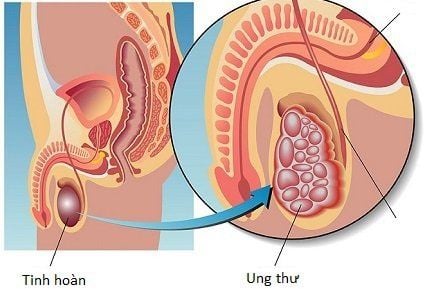
Ung thư tinh hoàn
2. Causes of testicular cancer
The main cause of testicular cancer is undescended testicles. In people with undescended testicles, 80-85% of them have undescended testicle cancer and 15-20% occur in the contralateral testicle. Other causes of testicular cancer include a history of mumps, hydroceles, inguinal hernias, and a history of testicular cancer.
According to the histopathology of testicular cancer, germ cell tumors account for 96%, of which it is divided into two types: seminal cysts (40%) and non-seminal tumors (60%). Seminal cysts are non-alpha-fetoprotein (AFP) related, and non-spermoid tumors have high levels of HCG and AFP.
3. Signs of testicular cancer
The most common symptom of testicular cancer is a painless, hard, solid mass in the scrotum. Other possible symptoms are: testicular pain, breast enlargement, back pain, hip pain when the cancer has spread to other organs. Therefore, if you experience this symptom, go to the doctor immediately, do not be subjective, take it lightly.
Steps for self-examination of testicles:
Stand in front of a mirror to see if there is swelling in the testicle area; Examine the testicles with two hands, the middle finger below and the thumb above the testicle; Gently massage both testicles, don't be too worried if you see uneven testicles because that's normal; Examine the epididymis (the epididymis is a soft tube behind the testicle that contains sperm); The most common location of testicular tumors is bilateral, but also anterior; Can check at any time feels convenient, the easiest is to check after each bath;
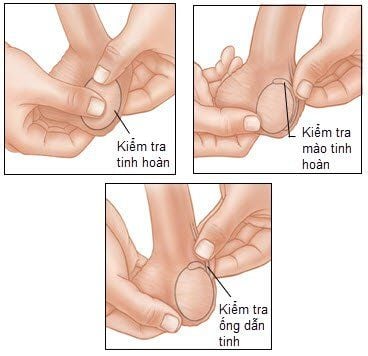
Kiểm tra tinh hoàn
4. Testicular Cancer Screening
Prognosis of late stage testicular cancer has improved markedly in recent years thanks to new treatment regimens. Up to 80% of patients at this stage live more than 5 years.
If the disease is detected at an early stage, it can be completely cured, the treatment cost is reduced and there are few complications. The 5-year survival rate for stage I spermatomas is 97%.
For undescended testicles, studies around the world show that about 2% of these cases are cancer in situ. The risk of progression to invasive cancer is up to 50%. Experts recommend surgical removal for undescended testicles to prevent testicular cancer.
5. Diagnosis of testicular cancer
5.1 Clinical Patients with testicular cancer often see an increase in the size of the scrotum, can pull the spermatic cord or have a feeling of heaviness in the scrotum; Testicular tumor is palpable, painless; Abdominal pain in patients with undescended testicles; Abnormal lymphadenopathy in the groin, neck...;
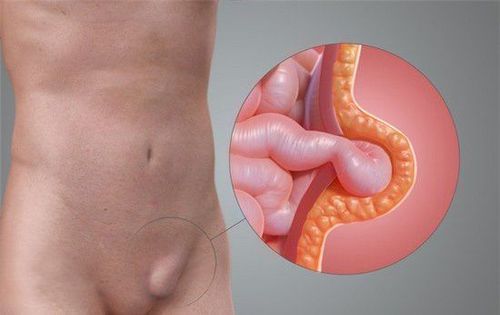
Nổi hạch bất thường vùng bẹn
Examining the testicles, comparing the two sides. 5.2 Subclinical Ultrasound of the scrotum can detect 75% of cases of tumor or hydrocele; Abdominal ultrasound detected ectopic testicle, other abnormal lesions in the abdomen; Chest X-ray to detect lung metastases; Cytological examination: Aspiration of the tumor; Tumor marker testing. To prevent testicular cancer, men, especially those between the ages of 15 and 35, should self-examine their testicles by gently manipulating the scrotum at least once a month. This is a simple and easy to use tracking method.
Prognosis of testicular cancer is relatively good, but the effectiveness of treatment depends on the stage of the disease. When detecting an abnormal solid mass in the scrotum, even if it does not cause pain, you need to go to the nearest male specialist hospital for timely examination and treatment.
MORE:
Don't ignore the early signs of testicular cancer Testicular cancer treatment and fertility What happens after orchiectomy




